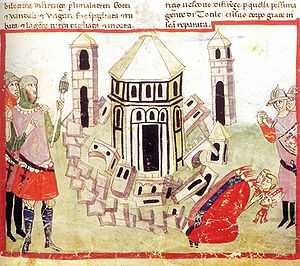542
This article is about the year 542. For the number, see 542 (number). For other uses, see 542 (disambiguation).
| Millennium: | 1st millennium |
|---|---|
| Centuries: | 5th century – 6th century – 7th century |
| Decades: | 510s 520s 530s – 540s – 550s 560s 570s |
| Years: | 539 540 541 – 542 – 543 544 545 |
| 542 by topic | |
| Politics | |
| State leaders – Sovereign states | |
| Birth and death categories | |
| Births – Deaths | |
| Establishment and disestablishment categories | |
| Establishments – Disestablishments | |
| Gregorian calendar | 542 DXLII |
| Ab urbe condita | 1295 |
| Assyrian calendar | 5292 |
| Bengali calendar | −51 |
| Berber calendar | 1492 |
| Buddhist calendar | 1086 |
| Burmese calendar | −96 |
| Byzantine calendar | 6050–6051 |
| Chinese calendar | 辛酉年 (Metal Rooster) 3238 or 3178 — to — 壬戌年 (Water Dog) 3239 or 3179 |
| Coptic calendar | 258–259 |
| Discordian calendar | 1708 |
| Ethiopian calendar | 534–535 |
| Hebrew calendar | 4302–4303 |
| Hindu calendars | |
| - Vikram Samvat | 598–599 |
| - Shaka Samvat | 464–465 |
| - Kali Yuga | 3643–3644 |
| Holocene calendar | 10542 |
| Iranian calendar | 80 BP – 79 BP |
| Islamic calendar | 83 BH – 81 BH |
| Julian calendar | 542 DXLII |
| Korean calendar | 2875 |
| Minguo calendar | 1370 before ROC 民前1370年 |
| Seleucid era | 853/854 AG |
| Thai solar calendar | 1084–1085 |
| Wikimedia Commons has media related to 542. |
Year 542 (DXLII) was a common year starting on Wednesday (link will display the full calendar) of the Julian calendar. From this year forward, the appointment of particular Roman consuls was abandoned and the office was merged with that of Byzantine emperor. Thus, the consular year dating was abandoned in practice, even though it formally remained until the end of the 9th century. The denomination 542 for this year has been used since the early medieval period, when the Anno Domini calendar era became the prevalent method in Europe for naming years.
Events
By place
Byzantine Empire
- Plague of Justinian: Bubonic plague, spread from Egypt, kills at least 230,000 in Constantinople (before counting stops) and perhaps two million or more in the rest of the empire. Emperor Justinian I, renewer of the greatness of Rome's empire and patron of the world's greatest religious building, the Hagia Sophia, contracts the disease but recovers.
- Lazic War – Justinian I sends a Byzantine army (30,000 men) to Armenia. The Persians severely outnumbered are forced to retreat, but at Dvin the Byzantines are defeated by a force of 4,000 men in an ambush and are completely routed.[1]
Europe
- Spring – Battle of Faventia: King Totila scatters with 5,000 men the Byzantine forces near Faventia (modern Faenza), beginning the resurgence of Gothic resistance to the reconquest of Italy.
- Battle of Mucellium: Totila marched down into Tuscany and defeats the Byzantines at Florence, in the valley of Mugello. He treats his prisoners well and many are induce to join his banner.
- March – Totila bypasses Rome and begins his expedition in Southern Italy.[2] He captures Beneventum and receives the submmission of the provinces of Apulia, Lucania and Bruttium.
- Siege of Naples: Totila besieges the city of Naples in Campania. A Byzantine relief force from Sicily is intercepted and almost destroyed by Gothic warships.
- King Childebert I and his brother Chlothar I invade Visigothic Spain. They capture Pamplona, but Zaragoza withstands a siege and the Franks retreat to Gaul. From this expedition Childebert brings back to Paris a relic, the tunic of Saint Vincent.
By topic
Religion
- Brendan establishes a monastic settlement on Eileach an Naoimh (approximate date).
Literature
- Gildas, British monk, writes his work "De Excidio et Conquestu Britanniae" (approximate date).
Births
- Su Wei, high official of the Sui Dynasty (d. 623)
- Xiao Min Di, emperor of Northern Zhou (d. 557)
- Xiao Ming Di, emperor of the Liang Dynasty (d. 585)
